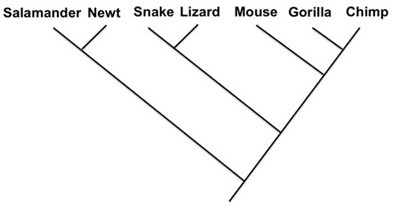 Indicate the phylogenies that show the same relationship as the phylogeny above. (Select all that apply.)A)
Indicate the phylogenies that show the same relationship as the phylogeny above. (Select all that apply.)A) 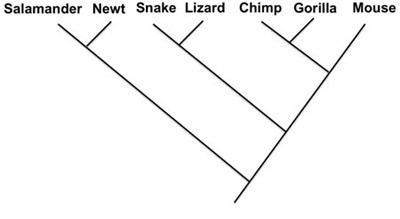 B)
B) 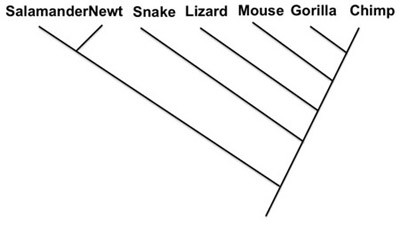 C)
C) 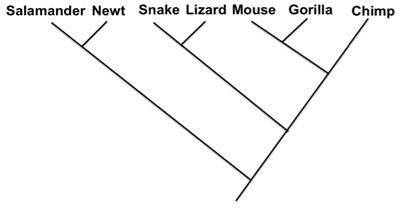 D)
D) 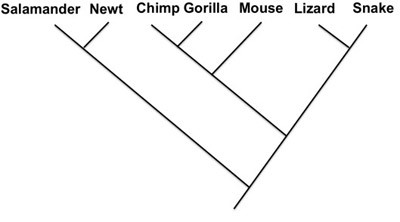
width="400" />
What will be an ideal response?
A, D
Clarify Question
• What is the key concept addressed by the question?
o This question addresses cladograms.
• What type of thinking is required?
o This question is asking you to weigh and judge, or evaluate, evidence to choose the best of the possible answers.
• What key words does the question contain and what do they mean?
o A phylogeny is a diagram describing a hypothesis about evolutionary relationships.
Gather Content
• What do you already know about cladograms?
o Cladograms are diagrams that represent hypotheses about evolutionary relationships.
o Cladograms are constructed according to the rules of cladistics.
Consider Possibilities
• What other information is related to the question? Which information is most useful?
o The important thing about a cladogram is the branching pattern and location of nodes. So if the species branch off with a different pattern, they do not represent the same evolutionary tree.
Choose Answer
• Given what you now know, what information and/or problem-solving approach is most likely to produce the correct answer?
o Two of the cladograms are the same except that a clade is rotated above a node. The order of listed species doesn't matter as long as the branching pattern is the same, so these represent the same tree.
Reflect on Process
• Did your problem-solving process lead you to the correct answer? If not, where did the process break down or lead you astray? How can you revise your approach to produce a more desirable result?
o This question asked which cladograms showed the same hypothesis as the original cladogram.
o The question required you to weigh and judge, or evaluate, evidence to choose the best of the possible answers.
o Did you recognize that you can "spin" the branches above a node on the cladogram, and it is the same cladogram?
You might also like to view...
What is immunity?
a. an organism’s capacity to resist infection only b. an organism’s capacity to both resist and combat infection c. a pathogen d. an organism’s capacity to combat infection only e. a set of genetic instructions
A clone is a
A. species. B. mutation. C. new kind of organism. D. genetically distinct population.
Select the TRUE statement(s) about saltwater fish when compared to freshwater fish. (Select all that apply.)
a. Have much higher blood osmotic pressure b. Drink more water c. Excrete more NaCl at the gill d. Urinate less e. All of the above
Restriction enzymes specifically recognize and cut short sequences of DNA called
A) introns. B) exons. C) sticky ends. D) restriction sites.